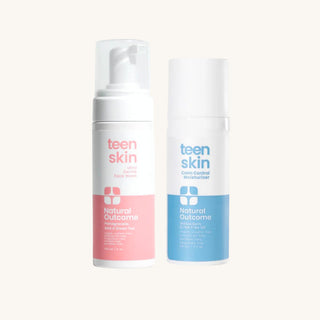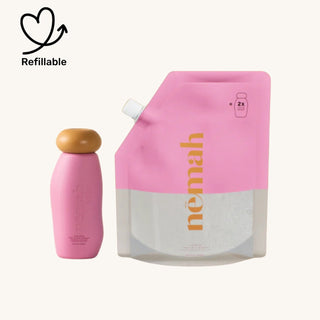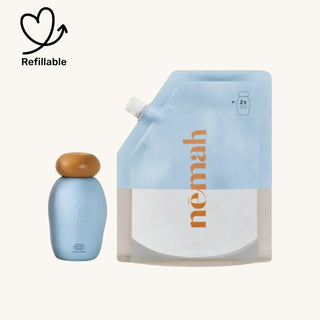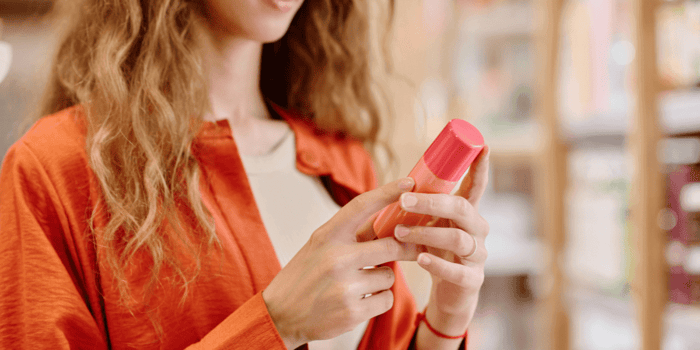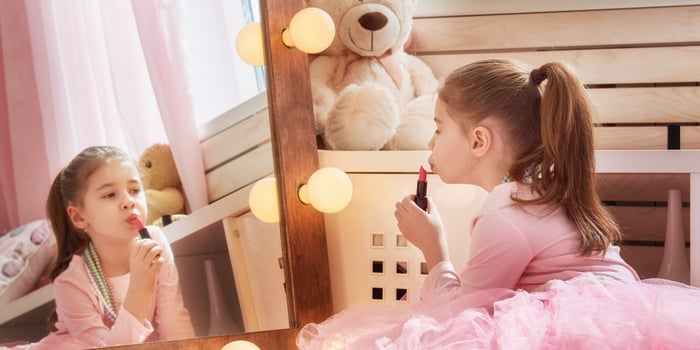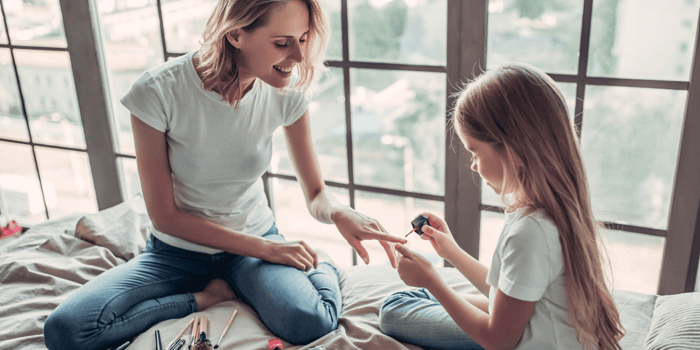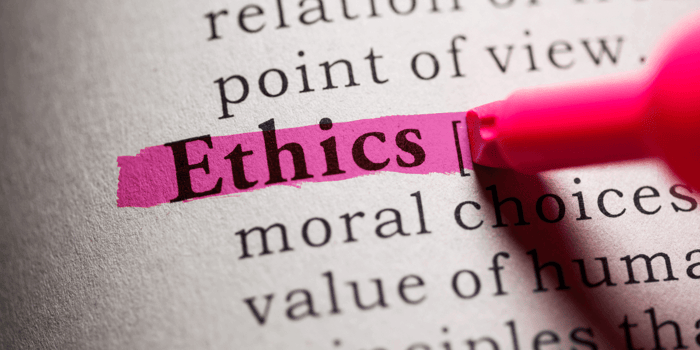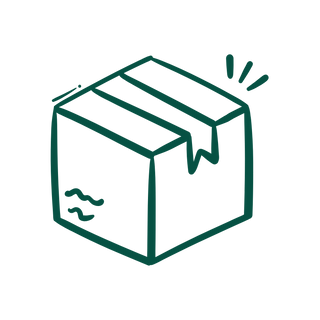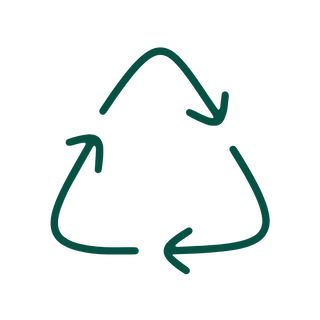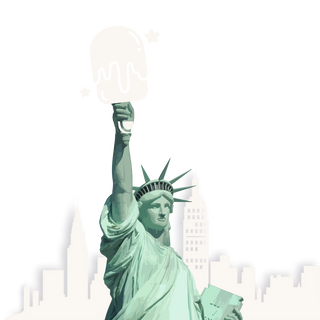What To Expect In This Blog Post
Introduction
- The rise of clean beauty for kids—but are all products really safe?
- Many mainstream kids’ beauty products still contain harmful ingredients like parabens, phthalates, and synthetic dyes.
- Why it’s crucial for parents to understand ingredient labels and choose truly non-toxic alternatives.
Section 1: The Most Toxic Chemicals Found in Kids’ Beauty Products
Despite labels claiming to be "kid-friendly" or "natural," many children’s beauty products still contain ingredients that can cause skin irritation, hormone disruption, and even long-term health risks. Here are the most dangerous ones:
🚨 1. Parabens (Preservatives That Disrupt Hormones)
- Used in lotions, lip glosses, and body sprays to prevent bacteria growth.
- Why it’s harmful: Mimics estrogen and has been linked to early puberty and reproductive issues.
- How to spot it: Anything ending in "-paraben" (e.g., methylparaben, butylparaben).
🚨 2. Synthetic Dyes (Made from Petroleum & Linked to Hyperactivity)
- Found in lip balms, eyeshadows, and bath products.
- Why it’s harmful: Some synthetic dyes, like Red Dye No. 3, are banned in food but still allowed in cosmetics.
- How to spot it: Look for FD&C or D&C followed by a color and number (e.g., Red 40, Blue 1).
🚨 3. Talc (Risk of Asbestos Contamination in Powders)
- Found in blush, baby powder, and face powders.
- Why it’s harmful: Some talc is contaminated with asbestos, a known carcinogen.
- How to spot it: Look for "Talc" on labels and avoid loose powders.
🚨 4. Fragrance & Phthalates (Hidden Toxins in “Scented” Products)
- Found in perfumes, lip glosses, body sprays, and lotions.
- Why it’s harmful: "Fragrance" can contain hundreds of undisclosed chemicals, including phthalates, which are linked to hormone disruption and allergies.
- How to spot it: Look for vague terms like “Fragrance” or “Parfum.”
🚨 5. Carmine (Crushed Beetles in “Natural” Makeup)
- Used as a red pigment in lip gloss, blush, and eyeshadow.
- Why it’s controversial: Even some cruelty-free brands use carmine, which requires killing thousands of insects for pigment.
- How to spot it: Listed as "Carmine," "Natural Red 4," or "CI 75470."
Section 2: How Beauty Labels Trick Parents – Misleading Claims & Hidden Toxins
Many kids' beauty products are marketed as "safe," "natural," or "dermatologist-tested," yet still contain harmful chemicals. Brands use misleading labels and greenwashing tactics to make parents believe a product is cleaner than it actually is.
1. Misleading Buzzwords & What They Actually Mean
- "Hypoallergenic" – No legal definition; doesn’t guarantee safety.
- "Dermatologist-Tested" – Only means a dermatologist reviewed it; doesn’t mean it’s toxin-free.
- "Natural Ingredients" – Could mean only 1-2 natural ingredients mixed with chemicals.
2. The Most Common Greenwashing Tactics in Kids' Makeup
- "Paraben-Free" but Contains Phenoxyethanol – A harsh preservative swap that still poses risks.
- "Cruelty-Free" but Uses Carmine – No animal testing, but still uses insect-derived colorants.
- "Organic Ingredients" but Not Fully Organic – Contains only some organic ingredients while the rest are synthetic.
3. How to Read Ingredient Labels Like an Expert
- The first five ingredients matter most—if a toxic ingredient is listed early, it’s a red flag.
- Look for synthetic dyes, fragrance blends, and chemical preservatives.
- Use apps like EWG Skin Deep or Think Dirty to check toxicity ratings.
Section 3: Safe Alternatives to Toxic Beauty Ingredients
Thankfully, there are natural, safe replacements for harmful beauty chemicals.
- Parabens → Vitamin E, Rosemary Extract
- Synthetic Dyes → Beetroot Powder, Hibiscus, Cocoa Powder
- Talc → Arrowroot Powder, Kaolin Clay
- Fragrance → Essential Oils, Fruit Extracts
Conclusion: Making Safer Beauty Choices for Kids
Toxic ingredients in kids' beauty products are more common than parents realize, but learning to read labels and avoid harmful chemicals can help keep children safe. By choosing natural alternatives, shopping from transparent brands, and making small swaps, we can ensure that play makeup, skincare, and hair products are truly safe for children.
Introduction: The Hidden Dangers in Kids’ Beauty Products
As parents, we go out of our way to protect our children from harmful foods, unsafe toys, and environmental toxins—but what about the beauty products they use? From lip balms and play makeup to bath bombs and detangling sprays, many kids' personal care products contain toxic chemicals that could harm their health. Even products marketed as “natural,” “gentle,” or “hypoallergenic” can still include synthetic dyes, hormone-disrupting preservatives, and undisclosed fragrance chemicals.
Despite growing awareness of clean beauty, many mainstream brands continue to use ingredients linked to skin irritation, allergies, and even long-term health risks. Some of the most common offenders include parabens (hormone disruptors), synthetic dyes (made from petroleum), talc (which may contain asbestos), and phthalates (found in artificial fragrances). Shockingly, some of these chemicals are banned in other countries yet still allowed in children’s products in the U.S.
So how can parents identify harmful ingredients and find truly safe alternatives? The answer starts with learning to read labels, understanding greenwashing tactics, and knowing what to avoid. This guide will break down:
✅ The most toxic chemicals hiding in kids’ beauty products
✅ How misleading labels trick parents into thinking products are safer than they are
✅ What to look for when shopping for non-toxic, kid-friendly beauty products
✅ Safe and effective natural alternatives for play makeup, skincare, and hair care
By the end of this guide, you'll have the knowledge to confidently choose safe, non-toxic beauty products for your child—without falling for misleading marketing claims.
Section 1: The Most Toxic Chemicals Found in Kids’ Beauty Products
Many parents assume that play makeup and children’s beauty products are formulated with safety in mind. After all, if a product is made for kids, it should be free from harmful chemicals, right? Unfortunately, that’s not always the case. Many popular brands still use toxic preservatives, artificial dyes, and undisclosed fragrance blends in their formulations—some of which have been linked to skin irritation, allergies, hormone disruption, and even long-term health risks.
One of the biggest concerns is the presence of parabens, which are commonly used as preservatives in lip balms, lotions, and body sprays. These chemicals mimic estrogen in the body and have been linked to early puberty, hormone imbalance, and reproductive issues. Despite growing awareness, many children's beauty products still contain parabens like methylparaben, propylparaben, and butylparaben, which can be absorbed through the skin and into the bloodstream. Checking ingredient labels for anything ending in "-paraben" is a crucial first step in avoiding these harmful preservatives.
Another common offender is synthetic dyes, which are used to create bright, playful colors in lip glosses, eyeshadows, and bath products. Many of these dyes, including Red 40, Yellow 5, and Blue 1, are derived from petroleum and coal tar and have been linked to hyperactivity, allergic reactions, and potential carcinogenic effects. Shockingly, some synthetic dyes are banned from food products due to safety concerns but are still allowed in cosmetics. If a product contains FD&C or D&C colors, it’s a red flag that the formula isn’t as clean as it appears.
Talc is another hidden danger in children's beauty products, especially in powder-based makeup like blush and eyeshadow. While talc itself isn't inherently dangerous, it is frequently contaminated with asbestos, a known carcinogen linked to lung diseases and ovarian cancer. Because asbestos contamination occurs naturally during the mining process, there is no guarantee that talc-based products are asbestos-free unless they have been independently tested. Many parents opt for talc-free alternatives like arrowroot powder or kaolin clay to avoid potential risks.
Fragrance is one of the most misleading ingredients in beauty products, as the term "fragrance" or "parfum" can legally represent a blend of hundreds of undisclosed chemicals. Many fragrance blends contain phthalates, which are chemicals used to make scents last longer. Phthalates are known endocrine disruptors that have been linked to developmental issues, asthma, and reproductive harm. Because companies are not required to disclose the individual chemicals used in their fragrance blends, avoiding products that simply list "fragrance" or "parfum" is the safest choice. Instead, look for products scented with real fruit extracts or essential oils.
Even some natural and organic kids' makeup brands contain carmine, a red pigment made from crushed beetles. While carmine is not synthetic, it raises ethical concerns, especially for parents who prefer vegan and cruelty-free options. Many brands that advertise themselves as "cruelty-free" still use carmine, which requires the deaths of thousands of insects to produce just a small amount of pigment. To avoid this, check ingredient labels for "carmine," "Natural Red 4," or "CI 75470."
Understanding which ingredients to avoid is the first step toward making safer choices for your child’s beauty products. But reading labels isn’t always straightforward, especially when brands use misleading marketing tactics to make their products appear cleaner than they actually are. In the next section, we’ll break down common greenwashing tricks and deceptive beauty claims that parents should watch out for when shopping for kids’ cosmetics.
Section 2: How Beauty Labels Trick Parents – Misleading Claims & Hidden Toxins
With the rise of the clean beauty movement, more parents are actively seeking non-toxic products for their children. Brands have responded by labeling their products with words like “natural,” “hypoallergenic,” and “dermatologist-tested” to appeal to health-conscious consumers. But not all of these claims are regulated, and many brands use misleading marketing tactics—a practice known as greenwashing—to make their products appear safer than they actually are.
One of the most common misleading claims is "hypoallergenic." Many parents assume this means the product is free from common allergens, but in reality, the term has no standardized definition or regulation by the FDA. A brand can claim a product is "hypoallergenic" even if it contains fragrance allergens, synthetic preservatives, or other skin irritants. Instead of trusting this label, it’s best to read the full ingredient list and look for products that have been verified by third-party organizations like EWG (Environmental Working Group).
Another deceptive term is “dermatologist-tested.” This phrase implies that a product has undergone thorough safety testing, but it simply means that a dermatologist was involved in some capacity—it does not indicate how the product was tested, what the results were, or whether it’s truly non-toxic. Some brands even use this claim on products that contain known skin irritants like parabens and synthetic fragrances.
The phrase "made with natural ingredients" is another greenwashing tactic that tricks parents into thinking a product is completely clean. A product might contain one or two natural ingredients (such as aloe or chamomile) while still being packed with harmful preservatives, artificial colors, and synthetic fragrance chemicals. A truly non-toxic product will have 100% clean ingredients, not just a few natural ones mixed with synthetic fillers. If a brand is not fully transparent about its entire ingredient list, it’s a red flag.
Some brands claim to be “paraben-free” but still use phenoxyethanol, a synthetic preservative that can cause skin irritation and nervous system toxicity. Phenoxyethanol is commonly used as a replacement for parabens, but research has shown it can still trigger allergic reactions and disrupt skin health. This is a classic example of swapping one harmful chemical for another, rather than making a truly clean product. Parents should check for phenoxyethanol in the ingredient list, especially in kids’ lip glosses, lotions, and face paints.
Even the "cruelty-free" label can be misleading. Many parents assume that a product labeled as cruelty-free is also free from animal-derived ingredients, but that’s not always true. A makeup brand can be certified cruelty-free (meaning it’s not tested on animals) while still using carmine, a red pigment made from crushed beetles. Many “clean” or “natural” brands use carmine in lip glosses, blushes, and eyeshadows while still claiming to be ethical and eco-friendly. To avoid animal-derived ingredients, look for vegan certifications in addition to cruelty-free labels.
Another misleading label is “organic ingredients”—a product can legally be labeled as "made with organic ingredients" even if only a small percentage of its formula is actually organic. Unless a product is USDA Certified Organic, it may still contain synthetic preservatives, artificial colors, and petroleum-based emulsifiers. To ensure a product is truly organic, look for full certification from reputable third-party organizations like USDA Organic or ECOCERT.
The best way to see through misleading beauty labels is to read the full ingredient list rather than trusting front-label claims. Brands know that parents are becoming more aware of toxic beauty ingredients, so they use marketing tactics to create a false sense of security. Checking for independent safety certifications, using ingredient-checking tools like EWG’s Skin Deep, and avoiding vague marketing terms can help parents make informed choices and avoid falling for greenwashing tricks.
In the next section, we’ll explore safe alternatives to the toxic chemicals found in kids' beauty products and how to find truly clean makeup, skincare, and hair care options.
Section 3: Safe Alternatives to Toxic Beauty Ingredients
Now that we know which ingredients to avoid, the next step is finding truly non-toxic alternatives for kids’ beauty products. Many mainstream brands swap out one harmful ingredient for another, making it difficult for parents to know what’s actually safe. By choosing clean, naturally derived ingredients, you can ensure that your child’s play makeup, skincare, and hair products are both fun and safe.
One of the most common toxic ingredients in children’s beauty products is parabens, which are used as preservatives to extend shelf life. Instead of parabens, look for products that use natural preservation methods like Vitamin E (tocopherol), rosemary extract, or Leuconostoc (radish root ferment). These ingredients provide antimicrobial benefits without disrupting hormones or irritating sensitive skin. Many clean beauty brands now use airless packaging and dark glass containers to extend product freshness without the need for harsh preservatives.
For synthetic dyes like Red 40 and Yellow 5, the best replacements are plant-based pigments. Some of the safest and most vibrant natural colorants include beetroot powder (for pink and red shades), hibiscus (for deep pinks and purples), cocoa powder (for brown tones), and spirulina (for soft green hues). These naturally derived pigments not only provide color but also offer skin-friendly antioxidants that nourish rather than harm. If you’re shopping for play makeup, look for mica-free, mineral-based pigments or those colored with fruit and vegetable extracts.
Talc, often found in powder-based products like blush and eyeshadow, can be replaced with arrowroot powder or kaolin clay. These ingredients provide a light, silky texture without the risk of asbestos contamination. Kaolin clay is particularly beneficial because it absorbs excess oil and soothes sensitive skin, making it a great alternative for children prone to irritation. Many clean beauty brands now offer talc-free loose powders and blushes, ensuring that kids can safely enjoy makeup without inhaling fine talc particles.
Fragrance is one of the trickiest ingredients to replace because many kids’ beauty products are scented to make them more appealing. Instead of products that list "fragrance" or "parfum" on the label (which can contain undisclosed toxic chemicals like phthalates), look for those scented with real fruit extracts or essential oils. For example, vanilla, coconut, and berry extracts provide a light, natural scent without synthetic additives. However, essential oils should be used in low concentrations, as some can be irritating to young skin. The safest options for kids include chamomile, lavender, and calendula extracts, which also have calming and skin-soothing properties.
If you’re looking for a cruelty-free alternative to carmine, avoid products labeled "Natural Red 4" or "CI 75470," as these indicate the presence of insect-derived pigments. Instead, opt for red shades made with fruit-based pigments, iron oxides, or plant-derived alternatives like annatto or paprika. Many clean beauty brands now offer vegan-friendly play makeup, ensuring that kids can enjoy fun colors without ethical concerns.
When choosing a truly non-toxic brand, look for certifications from reputable organizations like EWG Verified™, USDA Organic, and Made Safe®. These labels indicate that a product has undergone strict ingredient screening and safety testing. Additionally, ingredient-checking apps like Think Dirty and EWG Skin Deep can help verify whether a product contains hidden toxic chemicals.
By making small swaps—such as switching from synthetic dyes to plant-based pigments, from artificial fragrances to natural extracts, and from talc to kaolin clay—you can create a safer beauty routine for your child. In the next section, we’ll discuss where to buy the best non-toxic kids’ beauty products and how to avoid misleading options.
Section 4: Where to Buy Safe, Kid-Friendly Makeup & What to Avoid
Now that we’ve covered toxic ingredients and their safer alternatives, the next challenge is knowing where to shop for truly non-toxic play makeup and personal care products for kids. Many brands use greenwashing tactics to appear clean while still using hidden toxins, synthetic dyes, and undisclosed fragrance blends. Finding trustworthy products requires knowing which brands prioritize safety and how to avoid deceptive marketing claims.
Where to Buy Truly Non-Toxic Play Makeup & Skincare for Kids
The best way to ensure you’re getting clean, non-toxic beauty products is to buy from trusted brands and retailers that specialize in safe ingredients. Here’s where to start:
✅ Directly from clean beauty brands – Buying from a brand’s website ensures you get authentic, high-quality products. Look for brands that fully disclose their ingredients and provide transparency about their sourcing.
✅ Online clean beauty retailers – Websites like Thrive Market, The Detox Market, and Popsicle Beauty Club carefully curate products that meet strict ingredient safety standards. These retailers make it easier to shop for paraben-free, fragrance-free, and naturally pigmented options.
✅ Health food stores & specialty boutiques – Natural grocery stores like Whole Foods and Sprouts often carry a selection of safe beauty products for kids, including talc-free powders, plant-based lip balms, and mica-free play makeup.
✅ EWG Verified™ & Made Safe® certified products – Using third-party certification sites like EWG Skin Deep allows you to verify whether a product is free from endocrine disruptors, synthetic dyes, and harmful preservatives.
🔗 Related: The Ultimate Guide to Free Tools for Clean Living
Common Greenwashing Tactics to Watch Out For
Many brands market themselves as "natural" or "clean" while still including toxic chemicals in their formulas. Here are the biggest red flags to look for when shopping for kids’ beauty products:
🚨 "Paraben-Free" but contains Phenoxyethanol – Brands often swap out parabens for phenoxyethanol, a synthetic preservative that can still cause skin irritation and nervous system toxicity.
🚨 "Made with Organic Ingredients" but Not Fully Organic – A product may contain some organic ingredients, but unless it’s USDA Certified Organic, it can still contain synthetic fillers and chemical preservatives.
🚨 "Cruelty-Free" but Uses Carmine – Just because a product isn’t tested on animals doesn’t mean it’s free from animal-derived ingredients. Many “cruelty-free” brands still use carmine (crushed beetles) as a red pigment.
🚨 "Hypoallergenic" but Still Contains Irritants – There’s no legal definition for "hypoallergenic," so brands can still use synthetic fragrances and preservatives while claiming their product is safe for sensitive skin.
🔗 Related: Think Leaping Bunny Means No Animal Cruelty? Think Again: The Shocking Truth About Carmine
How to Shop Smarter & Avoid Hidden Toxins
Since misleading labels can make it hard to tell what’s actually safe, here are three simple ways to shop for non-toxic beauty products with confidence:
1️⃣ Read the full ingredient list – If a product doesn’t fully disclose all ingredients, that’s a red flag. Look for plant-based pigments, natural preservatives, and fragrance-free formulas.
2️⃣ Use ingredient-checking apps – Tools like Think Dirty and EWG Skin Deep let you scan a product or search for its ingredients to see if it contains toxic chemicals.
3️⃣ Look for third-party certifications – Products verified by EWG, USDA Organic, or Made Safe® have been tested for safety and are free from common toxins.
By shopping from trusted brands, avoiding greenwashing tricks, and checking for independent safety certifications, you can ensure your child’s beauty products are truly safe and toxin-free.
In the next section, we’ll explore how to raise the next generation of clean beauty lovers by teaching kids about safe beauty practices and self-confidence.
Section 5: Raising the Next Generation of Clean Beauty Lovers
Teaching kids about clean beauty and safe personal care is more than just avoiding toxic ingredients—it’s about helping them build a healthy, confident relationship with beauty from an early age. Many children are introduced to makeup through play, dress-up, or watching adults apply cosmetics, but the messaging around beauty can often be influenced by marketing, social media, and unrealistic beauty standards.
By focusing on safe, fun, and non-toxic beauty products, parents can encourage kids to see makeup as a form of creativity and self-expression rather than a necessity for confidence. It’s important to teach children that they don’t need makeup to be beautiful—but if they choose to explore it, they should use products that are safe for their skin and health.
One of the best ways to foster a clean beauty mindset is to include kids in choosing their products and learning about ingredients. Instead of just handing them a product, show them how to read ingredient labels and explain why certain chemicals should be avoided. Making it a fun learning experience—like a “clean beauty detective” game where they search for non-toxic options—can help them develop critical thinking skills when it comes to product choices.
Encouraging kids to explore play makeup in a healthy way also means setting boundaries around beauty standards. Instead of positioning makeup as something they “need” to look a certain way, frame it as an art form. Kids can use non-toxic face paints, plant-based lip balms, or mineral-based shimmers to create playful, imaginative looks without the pressure of traditional beauty expectations.
Another great way to build confidence and self-love is to incorporate positive affirmations into their beauty routine. While applying lip balm or play makeup, parents can encourage kids to say things like:
💖 “I am beautiful just the way I am.”
💖 “Makeup is fun, but I don’t need it to feel good about myself.”
💖 “I take care of my skin and body because I love myself.”
These small but meaningful messages help children understand that true beauty comes from within and that taking care of themselves is about self-love, not external validation.
By choosing non-toxic, safe beauty products and promoting a healthy approach to self-care, parents can help their children develop confidence, creativity, and an awareness of what goes into the products they use.
In the next section, we’ll wrap up everything we’ve covered and provide a simple checklist for parents looking to make the switch to truly non-toxic beauty products for their kids.
Conclusion: Empowering Parents & Kids to Make Safer Beauty Choices
Navigating the world of kids' beauty products can feel overwhelming, but by understanding which ingredients to avoid, how to spot misleading labels, and where to find truly non-toxic alternatives, parents can confidently choose safe, clean, and fun products for their children. The beauty industry is flooded with greenwashing tactics, making it even more important to read ingredient labels carefully and shop from brands that prioritize transparency and safety.
Beyond choosing safer products, parents have the unique opportunity to shape how their children perceive beauty. By teaching kids that makeup is a creative tool, not a necessity, and encouraging self-confidence from within, we can help raise the next generation of clean beauty lovers—children who make informed choices, value self-care, and understand that beauty should never come at the cost of their health.
The journey to clean beauty doesn’t have to happen overnight. Small swaps—like replacing synthetic dyes with plant-based pigments, choosing fragrance-free products, or switching from talc to kaolin clay—can make a big difference over time. By supporting truly non-toxic brands, avoiding deceptive marketing claims, and involving kids in safe beauty choices, we can ensure that their first experiences with makeup and personal care are both fun and safe.
